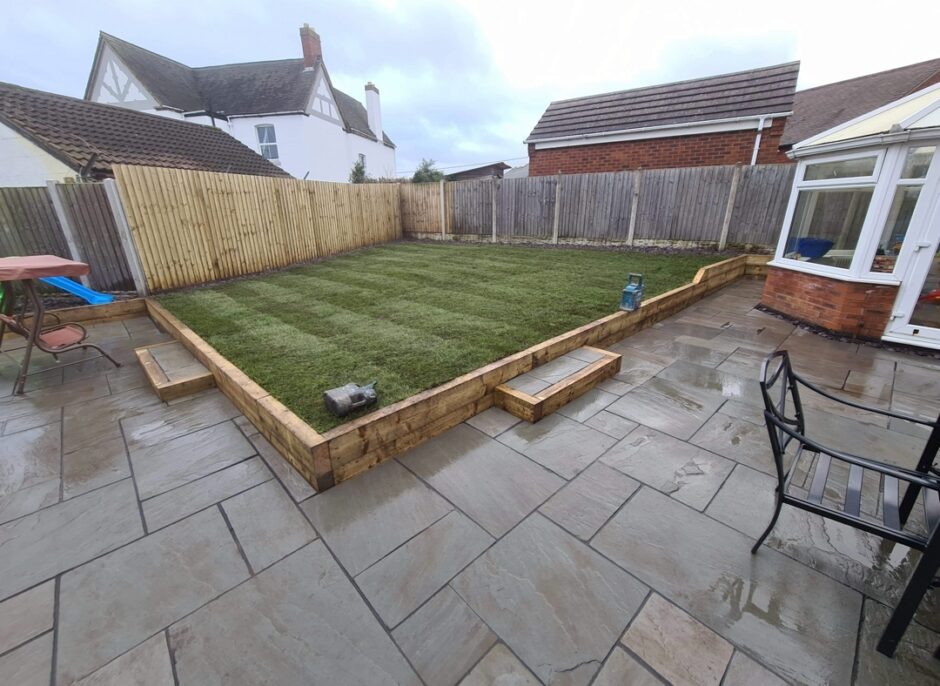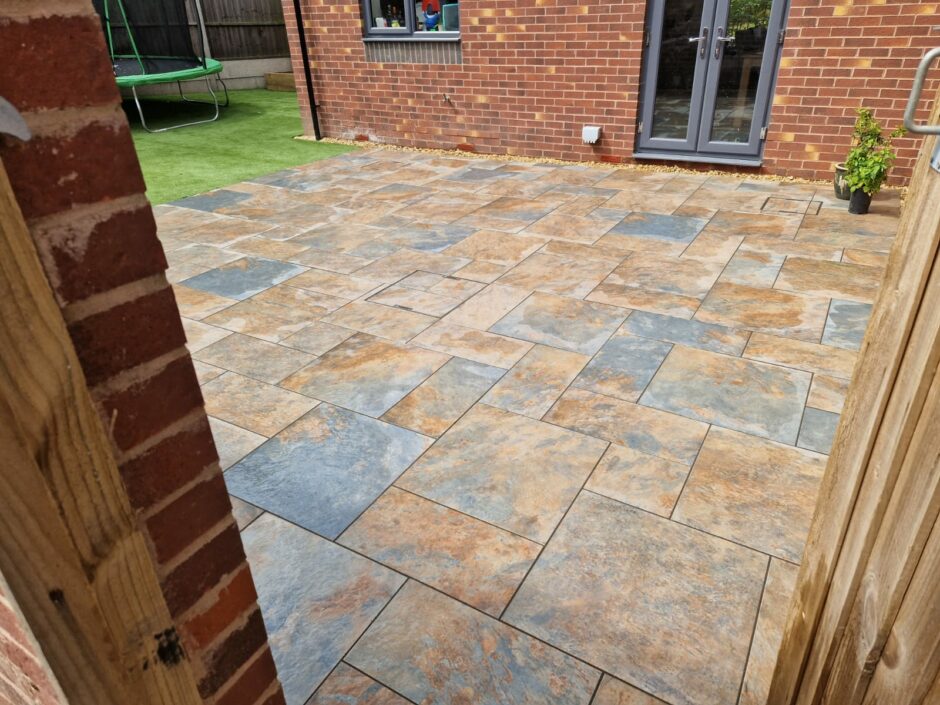The True Cost of Paving
There is certainly a huge choice in the market place when it comes to the different types of paving that are available today – Concrete in various colours and textures, Sandstone slabs or Granite setts, and now or course – Porcelain which is probable the latest (at the time of writing).
So when we look at what is available and then look at what we think we can afford, then the whole process can take on a completely different feel.
Often we then choose a finish which isn’t exactly what we would like, but we convince ourselves that it will be O.K.. “It’ll do. We’ll get used to it, and it’ll be better than what we’ve got … won’t it ?”
If that sounds like a conversation that you have been having recently, there are a few things to consider which you may not have thought of.

Unlike the natural stone slabs in the picture above, where concrete slabs are concerned, in many instances, a major influence upon the cost of producing them is the quality of the dye that is used. Less expensive dyes may not hold their colour for as long. They may also contain less aggregate, be thinner and be not as hard wearing or long lasting as you would have hoped.
But consider this. Whether you choose the least or the most expensive slab, the preparation that is required, and therefore the cost of that part for any job – is just the same.
Which means that going up a notch in quality means only a slight percentage increase in the cost per square Metre for the choice of slab. So, if you needed 100 slabs for the job, and the slab you would like is £1.35 more than the one you are going to settle for, the £135 extra cost is only a small percentage increase on the whole job …. Food for thought ?

